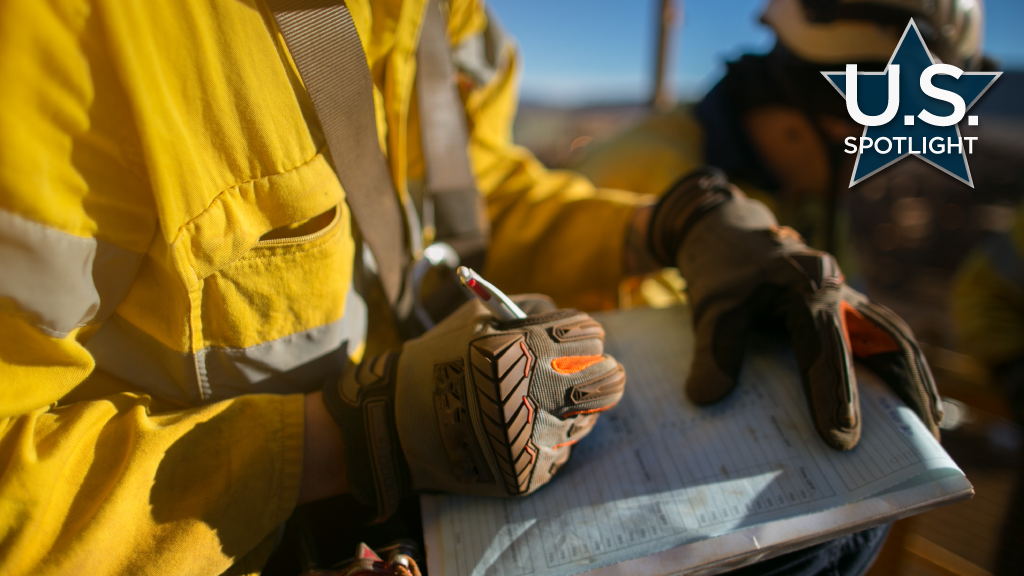A new report indicates leading construction companies in STEP Safety Management System are nearly six times safer than the industry average.
The findings show top-performing ABC members have workplace injury, illness and fatality rates that are 576-per-cent lower than the construction industry average.
The report is based on research on more than 900 million work hours completed by participants in the construction, heavy construction, civil engineering and specialty trades in 2023.
ABC recently released the significant findings in a report called . The association is a national construction industry trade group founded in 1950. It represents more than 23,000 members in 68 chapters and is founded on the merit shop philosophy.
The report was commissioned to help understand the impact of deploying the safety management system on overall safety performance of companies. The 2023 STEP self-assessment data from ABC members was used to calculate the numbers reflected in the report.
“The tools in ABC’s safety report provide a roadmap to industry leaders to win and deliver their work to communities without incident through leadership commitment, cultural transformation and industry-leading results,” Greg Sizemore, vice president of health, safety, environment and workforce development at ABC, explained in a statement. “Top-performing STEP members measuring leading and trailing indicators are nearly six times safer than the industry average, achieving an 83-per-cent reduction in total recordable incident rates.
“Both the 2024 ABC Safety Performance Report and ABC’s STEP Safety Management System will help any contractor or supplier on their safety journey. If we choose to lead, if we choose to commit and if we choose to transform, together we will create the conditions for everyone to do their work without incident and go home safer, healthier, happier and fulfilled every day.”
The report is based on submissions of company data gathered from ABC members that deployed STEP in 2023. The data was sorted using statistically valid methodology developed by the BLS and then combined to produce analyses of STEP member performance.
Established in 1989, the system provides contractors and suppliers with a framework to build, measure and strengthen industry-leading safety programs.
Members that deployed STEP measured their safety processes and policies on key components through a detailed self-assessment with the goal of implementing or enhancing safety programs that reduce jobsite incident rates. They scored their level of achievement for each component on a scale of zero to 12. Companies received a recognition level of diamond, platinum, gold, silver, bronze or participant based on the score they achieved in the assessment.
The idea is that once problems are identified, it will spur deeper conversations between leaders and team members to develop a plan of action and implement best practices at a company.
Until now, relatively few studies have been conducted on the correlation between the use of measures companies can take to keep workers safe on jobsites – and empirical evidence on the number of incidents, accidents and injuries that occur, known as trailing indicators.
The report found companies that conduct an in-depth indoctrination of new employees into the safety culture, systems and processes based on a documented orientation process experience incident rates that are 45 per cent lower than companies that limit their orientations to basic safety and health compliance topics.
Companies that conduct 15-to-30-minute daily toolbox talks reduced the Total Recordable Incident Rate (TRIR) per 100 full-time employees, and Days Away, Restricted or Transferred rate (DART) per 100 full-time employees by 81 per cent compared to those employers that hold them monthly.
There was a 57-per-cent reduction in TRIR and a 59-per-cent reduction in DART rates among companies that established a process to define the scope of work, analyze hazards, develop and implement hazard control methods, perform the work within established controls as well as provide feedback and continuous improvement.
Employer involvement at the highest level of company management is also key as the report found that scenario produces a 54-per-cent reduction in TRIR and 52-per-cent reduction in DART rates.
Top-performing, or STEP Diamond members, invested an average of 203 minutes in safety orientations in 2023, the study found. Meanwhile, Diamond companies that conducted new-hire orientation sessions of more than three hours on average improved their TRIR by 83 per cent.
Robust substance abuse prevention programs and policies with provisions for drug and alcohol testing, where permitted, led to a 47-per-cent reduction in TRIR and a 48-per-cent reduction in DART rates.
Buddy Henley, president of Maryland-based Henley Construction Co. Inc. and chair of the ABC national board of directors, said achieving industry-leading health and safety in the construction industry is not just a goal, but a core value for ABC members.
“Including health and safety in every action requires a commitment to excellence, a culture of accountability and a relentless pursuit of ensuring every worker returns home safely every day,” he said.











Recent Comments